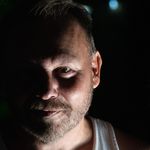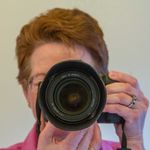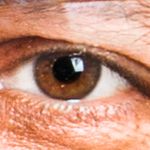Copy link to clipboard
Copied
Hi everyone,
I was testing/trying to take some night light photos, I'm using a Sony A7II with a FE 28-70 (basic lens) and I'm trying to learn and maximizing the use of the lens as well as some night photo techniques neither the technique is good and I'm aware the lens is nothing special, but I have to work with what I have at the moment, and I would like some guidance and opinion on how to improve... what kind os test should I go for or something.
I have a couple of pics, of course they are adited a little... just trying to make them look a little more appeal to my eyes...
Thanks in advanced for any comment/guidance.
 1 Correct answer
1 Correct answer
Hi, we are here to help you sell your photos on the Adobe Stock platform. So that is where my comments are directed.
Photo 1, the lighthouse, the horizon is not level and the lighthouse is not verticaly straight. Your highlights are overexposed. This results in the details around all lights to be lost. The background is noisy, has artifacts, lightglare, and some lights which need to be removed. There appears to be camera shake. Was the camera on a tripod? The photo is soft. This means the focu
...Copy link to clipboard
Copied
Hi, we are here to help you sell your photos on the Adobe Stock platform. So that is where my comments are directed.
Photo 1, the lighthouse, the horizon is not level and the lighthouse is not verticaly straight. Your highlights are overexposed. This results in the details around all lights to be lost. The background is noisy, has artifacts, lightglare, and some lights which need to be removed. There appears to be camera shake. Was the camera on a tripod? The photo is soft. This means the focus is off and the contrast should be higher. The photo could be cropped better.
This information relates to all of your photos. Your last photo has a sensor spot in the middle.
The camera is not the problem. Pay attention to exposure and focus. Learn to know the slowest possible shutter speed for holding your equipment. Pay attention to composition and learn the rules to make appealing photos. Correct the photo in post processing editing. There is a lot of information and schooling in internet.
Here an idea:
Photography is more than just pressing a button!
========================================
Copy link to clipboard
Copied
Here are some links that you might find helpful regarding night photography:
- https://www.adobe.com/creativecloud/photography/discover/night-photography.html
- https://blog.adobe.com/en/publish/2017/02/08/tips-for-mastering-night-time-photography
- https://www.adobe.com/sea/lead/photo/yourshotyourstory/night.html
Good luck with your night photos.
Rob R, Photographer
Copy link to clipboard
Copied
Always zoom in between 100-200% to inspect your images before uploading to Adobe Stock. Had you done so in these images, the very soft focus, noise and artifacts would have been readily apparent. The soft focus and misalignment would also seem to indicate that you weren't using a tripod, which is absolutely essential for low-light photography. Get a tripod (with a level if your camera software doesn't include one) and keep practicing because it looks like you have a lot of interesting places to photograph.
Copy link to clipboard
Copied
Hi @Luis24588629odot ,
The first file has motion blur.
The second is noisy, has areas of overexposure and the color seem washed out.
The third also has a washed out look. The color is not right. There seem to be a white balance issue. There's a a green cast.
There are some good courses on LinkedIn Learning. I think you should take advantage of these. Otherwise you may buy books that will guide you.
Best wishes
Jacquelin
Copy link to clipboard
Copied
Night photos are challenging due to uneven lighting.
For best results, take multiple exposures at different settings from the exact same camera angle. A stable tripod is essential and a camera remote is very helpful to reduce unwanted camera shake.
Afterwards, stack & mask layers in Photoshop or Lightroom to achieve best overall exposure. It's tedious work but an excellent exercise.
Hope that helps.
Copy link to clipboard
Copied
In addition to what has been said, you also have sensor spots, that need to be corrected (Street lights):
You really need to get the focus right, do noise reduction and geometric corrections.
And avoid over-processing and overexposure. Vessel Lights shows overexposed lights. Taking the same picture with different exposures will help you to choose the best one for processing, or even combine pictures into one. With hardware filters, you may also be able to get both, the dark foreground and the light background correctly exposed.
Your ISO should always be as low as possible, to avoid noise.
Find more inspiration, events, and resources on the new Adobe Community
Explore Now






